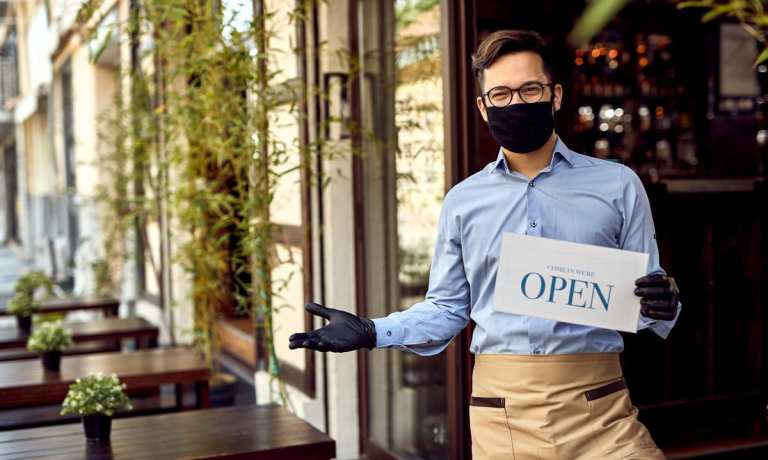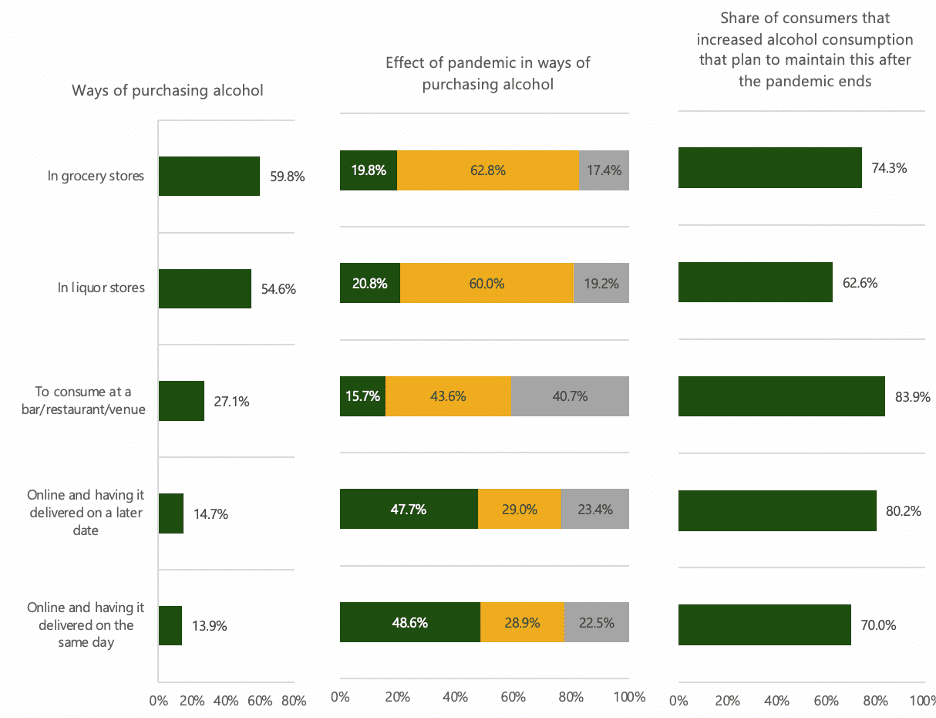Restaurant Habits In The Post-COVID Future, By The Numbers

The last year has been difficult, often even devastating, for restaurants, but alongside these challenges came a huge outpouring of innovation, with many restaurants implementing new digital technologies and operational solutions to carry them through the year. As restaurants pivoted, so did consumers, adopting new ordering technologies and dining routines to enjoy restaurant-cooked meals whenever possible. Recent PYMNTS data give us a glimpse into which of these habits are likely to carry through into the post-pandemic future, even as eager consumers return to the storefront for in-restaurant dining experiences.
Digital Ordering Habits Are Here to Stay

Our researchers found that about 4 in 10 consumers turned toward remote direct-from-restaurant ordering channels more so than before the pandemic’s onset, with these channels including ordering by phone call, from the restaurant’s website or through its app. A significant share of consumers, about 1 in 4, also report ordering delivery through restaurant aggregators more than they did before the pandemic.

While these habits arose for the most part from the contagion concerns associated with mid-pandemic restaurant dining, they are likely to stick around even once the vaccine rollout is complete and consumers’ fear of contact largely subsides. Three-quarters, give or take a few percentage points, of those who have been ordering more by phone call, website, or restaurant app report that they expect to maintain some or all of the changes that they have made to their ordering behavior during the pandemic.
Additionally, though restaurant aggregators have gained a smaller share of consumers’ ordering behavior in the last year, that share is even more likely to continue using these aggregators once the pandemic subsides, with 4 out of 5 aggregator users expecting to maintain some or all of the changes they have made to their ordering behavior.
The Boozy Future Of Restaurants
Consumers were drinking more during the pandemic, though alcohol sales at bars and restaurants were way down. Plus, those who have increased their alcohol consumption during the last year expect for the most part to continue to purchase alcohol at similar levels in the future. Though the majority of consumers decreased their in-restaurant or in-bar alcohol purchasing, as they avoided public spaces in favor of drinking from the safety of their homes, a small share has actually increased restaurant/bar purchasing in the last year. 16 percent of consumers — about 1 in 6 people — have been drinking more on-premises, and 84 percent of these consumers expect to retain these habits in the future, a greater share than any other alcohol purchasing channel.
Restaurant operators have the opportunity to seize on these habits, and perhaps, with clever marketing, even to benefit from the drinking habits of those who have been consuming alcohol at home.

The Demographics Of Restaurants’ First Returners

Older consumers are the most eager to return to on-site dining, with 68 percent of baby boomers and seniors and 56 percent of Generation X consumers indicating a desire to dine out more often, compared to only 44 percent of millennials and Generation Z consumers. This disparity may in part come from younger consumers taking more advantage of low-contact options for restaurant-cooked meals. Per these self-reports, millennials are twice as likely as baby boomers to use mobile order-ahead options for off-premises dining and more than four times as likely baby boomers to use restaurant aggregators for delivery.
Still, there is across-the-board demand to return to restaurants for onsite dining, with more than half of table service restaurant customers indicating that they intend to return to dining out at pre-pandemic levels. The combination of pent-up demand for indoor dining and of the stickiness of digital ordering habits leaves restauranteurs with a valuable opportunity to seize on consumers’ shifting desires to increase sales through both on- and off-premises channels.
Read More On Restaurants:
- Domino’s Loyalty Refresh Doubles Members’ Pickup Orders Amid Consumer Hesitance
- Gen Z Diners Fall Behind Baby Boomers in Restaurant Spending
- Starbucks Launches EV Charging Partnership With Mercedes
- OpenTable and Visa Launch Restaurant Reservation Partnership